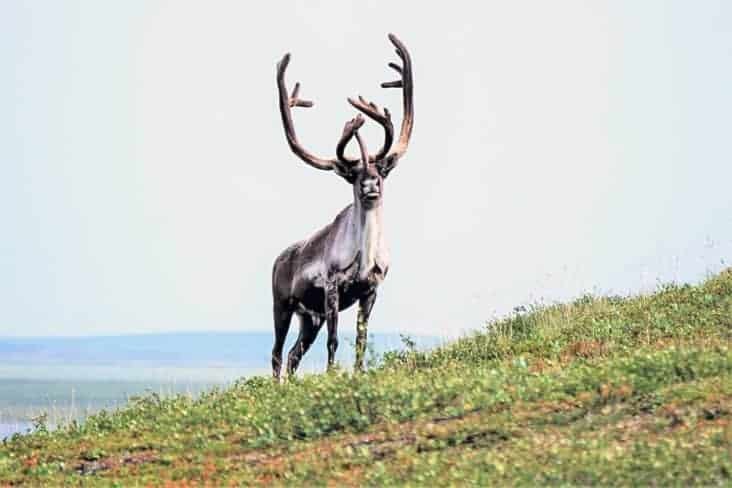Bluenose-East caribou numbers have declined to the point that the herd is now listed as Red, meaning a low population, and the Bluenose-West caribou population remains 'intermediate and decreasing' in Orange status.
Caribou of the Cape Bathurst herd remains in the red status as well, though observations suggest the population has stabilized.
The figures come from the latest public update of stakeholders in the Advisory Committee for Cooperation on Wildlife Management status meeting Nov. 19-21 at the Inuvik Community Corporation.
Hosted by the Gwich'in Renewable Resources Board and the Wildlife Management Advisory Council, the annual meeting allows different Hunting and Trappers committees, Territorial and National Parks officials, biologists and elders to compare notes on the state of the caribou and the overall ecology of the region.
Representatives of the regions of Wek’èezhı̀i, Sahtú Settlement Area and Kitikmeot region of Nunavut all agreed the Bluenose-East caribou herd was in decline, while Sahtú Settlement Area and Inuvialuit representatives observed the Bluenose-West seemed to be growing.
"Community members in both the Inuvialuit and Sahtú observed more calves than in previous years, suggesting that the population may be moving towards a yellow status but for the moment the ACCWM decided to use the precautionary principle and maintain the previous year’s status designation," reads the Bluenose-West 2019 Action Plan. "This decision recognizes that the herd size appears to be stable and that ongoing conservation actions are needed to help the Bluenose-West herd recover."
Both herds were last surveyed in 2015, prior to the 2017 action plans, so current estimates were based on observations by hunters and researchers. However, in the Bluenose-East's case, much of those observations were noticing the herds were not where they normally are. The 2019 action plan notes the difficulty in communities reaching the herds and the precautionary principle led to the downgrade to red status.
On a more positive note, observations of the Cape Bathurst Herd suggested the population has stabilized and possibly could even be on the rebound following a 2018 photo survey put population estimates at 4,521 ± 875 individuals at least a year-and-a-half old.
"We are very cautiously optimistic that the 2018 survey showed good results," said Environment and Natural Resources regional biologist Tracy Dawson, who noted even in the best scenario the population had a long way to go with the population slipping 20 per cent in the previous survey from 2015.
The action plan cautions that the herd could still decline due to factors ranging from increased hunting pressure on the Inuvik-Tuktoyaktuk Highway and crossover of both herd members and tag use between the herd and the Bluenose-West herd.
In all three populations, the body condition was generally improving, with hunters not finding any major signs of disease or malnutrition. Predator populations were also observed as abundant in southern ranges, with representatives from several areas suggesting an increase in predator control, in particular with wolves and grizzly bears, may be in order.
Information shared in the meeting will feed back into the ACCWM's Taking Care of Caribou wildlife management plan, which was first put together in 2014. The ACCWM itself was established in 2008 and will update its Memorandum of Understanding in 2021.
A press release from the ACCWM said the meeting went in-camera on it's last day "to discuss herd status and associated management actions for each of the herds in 2020/21. The ACCWM will finalize an action plan for each herd based on information provided at the meeting and submit the action plans to each Member Board of the ACCWM for their review and approval.
"Following formal approval by the Member Boards, action plans for the Cape Bathurst, Bluenose-West and Bluenose-East herds will be submitted to governments for implementation."
